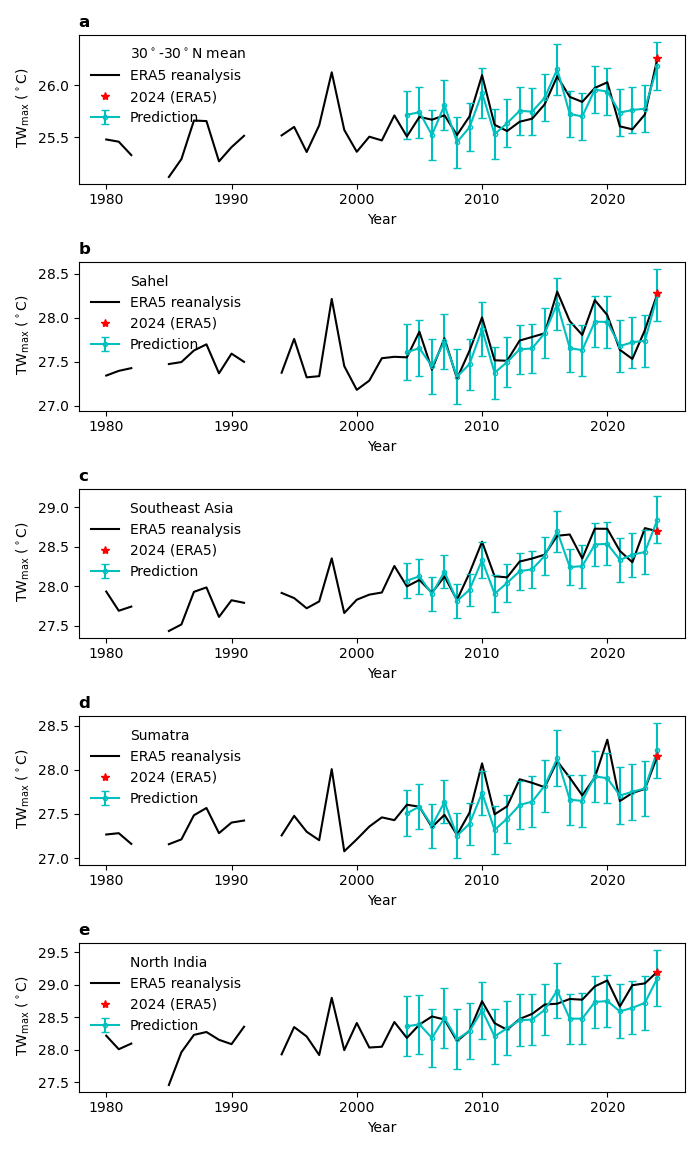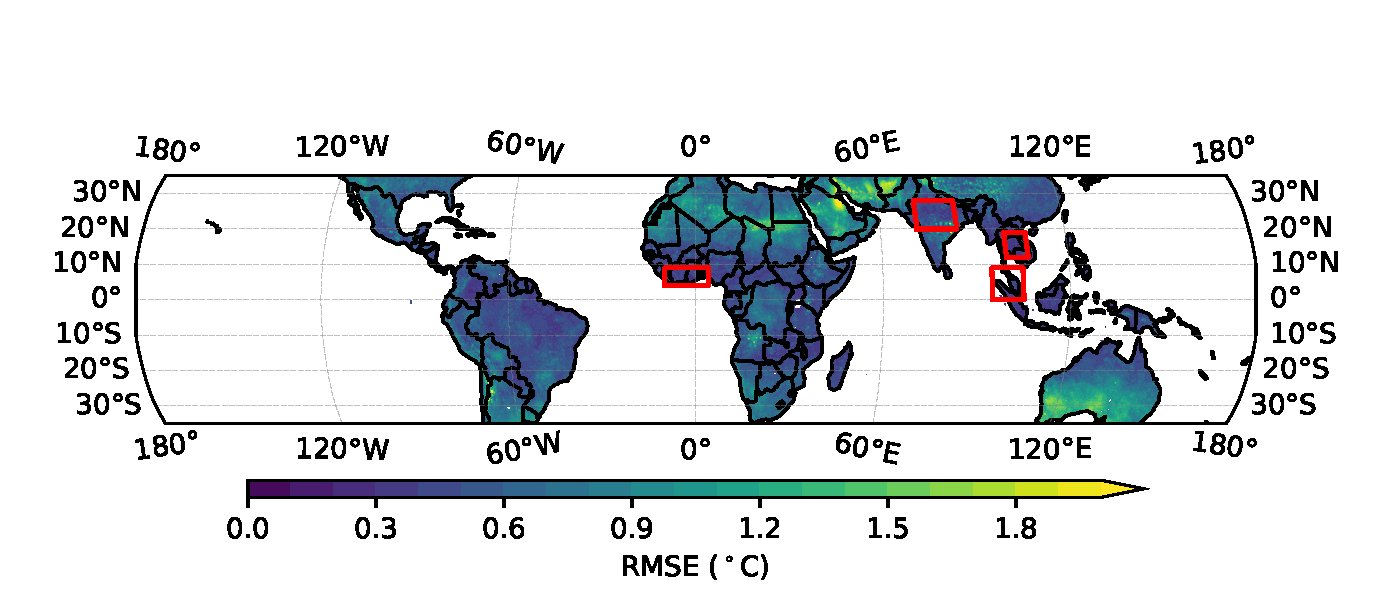forecast
March 2025 Update: Successful Prediction of 2024 Tropical Land TWmax
In December 2023, Zhang et al. (2024) predicted that the tropical land mean TWmax (annual maximum hourly wet-bulb temperature) for 2024 would be 26.2°C (25.9–26.4°C). This prediction was based on the El Nino strength in December 2023. The actual observed value turned out to be 26.3°C, falling well within our 95% prediction interval and closely matching the central estimate. This value surpassed the previous record set in 1998 by 0.14°C.
The updated figure below, adapted from Supplementary Figure S4, includes reanalysis data for 2024. Our predictions not only captured the tropical land mean TWmax but also accurately forecasted TWmax in four of the world’s most heat-stressed regions: Sahel, Southeast Asia, Sumatra, and North India.
Our model thus successfully predicted the out-of-sample extreme wet-bulb temperatures in 2024.

Dec 2023 Post: Prediction of 2024 Tropical Land TWmax
Humid heatwaves, characterized by high temperature and humidity combinations, challenge tropical societies. Extreme wet-bulb temperatures (TW) over tropical land are coupled to the warmest sea surface temperatures (SST) by atmospheric convection and wave dynamics (see Zhang, Held, and Fueglistaler, 2021 on my publications page for details). Here, we harness this coupling for seasonal forecasts of the annual maximum of daily maximum TWmax. In Zhang et al. (2023), we develop a multiple linear regression model that explains 80% of the variance in tropical mean TWmax and significant regional TWmax variances. Forecast of the annual maximum wet-bulb temperature TWmax averaged over land between 30°S and 30°N and over four regions listed in the menu below. Place your mouse on the interactive chart to read the probability of setting new records. The Oceanic Niño Index for December (NDJ) 2023 is 2.0 based on NOAA.

References
2024
- Forecasting Tropical Annual Maximum Wet-Bulb Temperatures Months in Advance from the Current State of El NiñoGeophysical Research Letters, 2024UC Berkeley News–Record-breaking heat and humidity predicted for tropics this summer